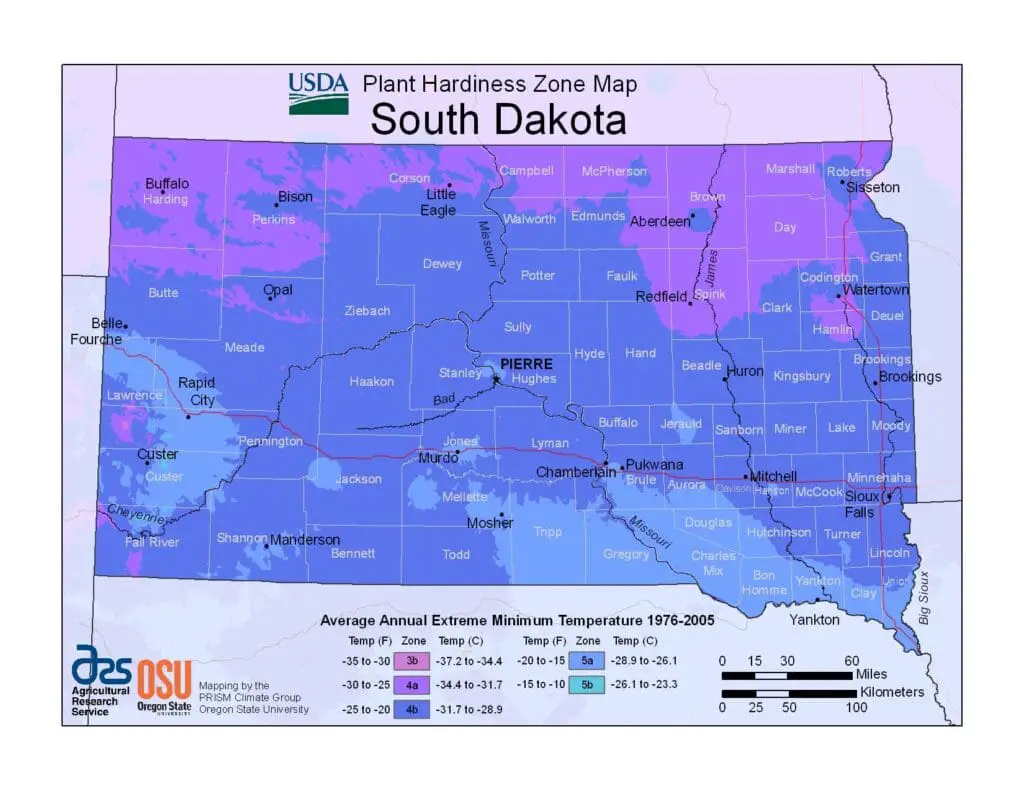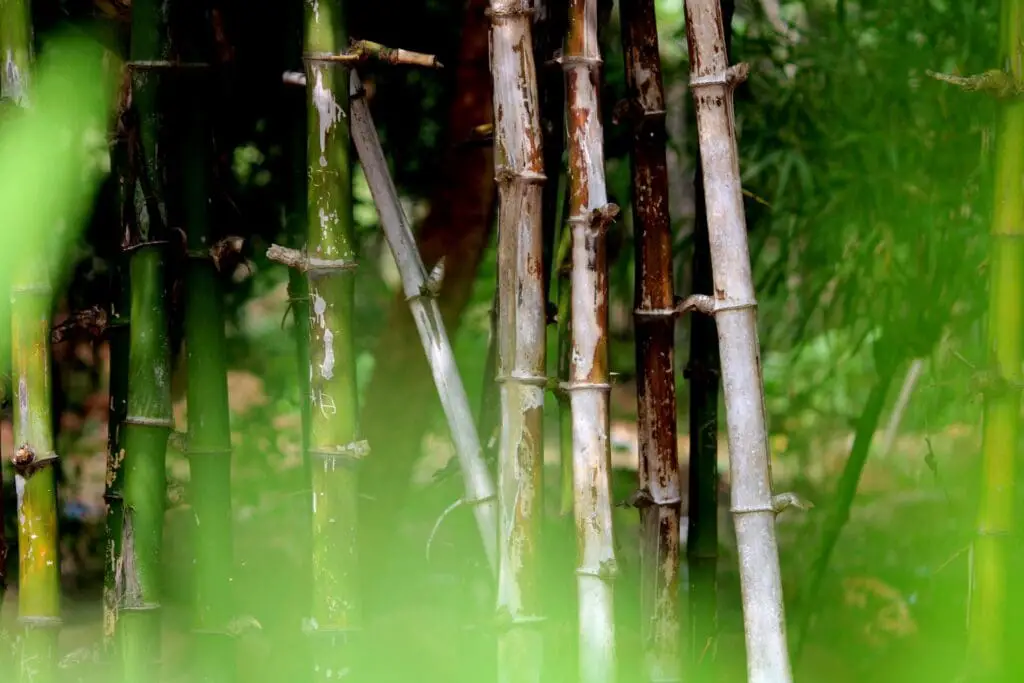Growing Bamboo In South Dakota
Bamboo, a versatile and fast-growing plant, has gained popularity in various industries such as construction, landscaping, and paper production. However, due to its specific climate requirements, many believe that growing bamboo in South Dakota may be challenging. This article aims to provide valuable information on successfully cultivating bamboo in this region.
What is bamboo?
Bamboo is a versatile plant that belongs to the grass family and can be found in various species, known for its rapid growth rate and strong, flexible stalks.
It is an extraordinary plant that has been utilized by humans for centuries due to its numerous beneficial properties. With over 1,000 different species, bamboo has adapted to diverse climates worldwide, including regions with harsh conditions.
Its remarkable growth rate enables it to reach maturity within just a few years, making it an excellent choice for those seeking quick results. Furthermore, bamboo’s sturdy stalks provide strength and durability, making it suitable for various applications such as construction materials, furniture production, and even paper manufacturing.
Types of bamboo
There are various species of this versatile plant, each with unique characteristics and appearances, that can thrive in the specific climate and conditions found in the region.
Some common types of bamboo include:
- Phyllostachys aurea (Golden Bamboo), which is known for its tall height and golden-colored stems
- Bambusa multiplex (Hedge Bamboo), which forms dense clumps and is commonly used as a hedge or screen
- Fargesia nitida (Blue Fountain Bamboo), which has blue-green foliage and a graceful, arching habit
- Phyllostachys nigra (Black Bamboo) with its striking black culms
- Phyllostachys bissetii (Bisset’s Bamboo) known for its fast growth rate
Each type offers different aesthetic qualities, but all share the ability to grow well in South Dakota’s challenging climate.
Climate requirements
The suitability of bamboo for different regions is heavily influenced by the specific climate requirements that must be met.

In South Dakota, where the climate can be harsh and unpredictable, selecting bamboo species that are well adapted to withstand these conditions is crucial. Bamboo varieties that thrive in temperate climates with cold winters and hot summers are particularly suitable for this region. These varieties have evolved to tolerate temperature fluctuations, strong winds, and heavy snowfall. Additionally, they require a minimum annual rainfall of around 30 inches and prefer well-drained soil with a pH level between 6 and 7.
By ensuring these climate requirements are met, successful cultivation of bamboo in South Dakota becomes more achievable. Understanding the unique needs of each bamboo species allows gardeners to make informed decisions when selecting plants for their specific climate conditions.
Preparing the soil
One important aspect in cultivating bamboo successfully in South Dakota is the preparation of the soil. Properly preparing the soil ensures optimal growth and development of bamboo plants. Here are three key points to consider when preparing the soil for growing bamboo:
-
Soil Testing: Conduct a thorough soil test to determine its pH level and nutrient content. Bamboo prefers slightly acidic to neutral soil with a pH range of 5.5-7.
-
Organic Matter: Incorporate organic matter such as compost or well-rotted manure into the soil to improve its fertility, water-holding capacity, and drainage.
-
Drainage: Bamboo requires well-drained soil to prevent waterlogging, which can lead to root rot. Ensure proper drainage by amending heavy clay soils with sand or gravel.
Planting bamboo
To ensure successful establishment of bamboo, careful attention should be given to the planting process. Planting bamboo requires specific steps to optimize growth and maximize control over its spread.
First, it is crucial to select a suitable location that offers well-drained soil and receives adequate sunlight. Before planting, the soil should be prepared by removing any existing vegetation and incorporating organic matter for improved fertility.
The next step involves spacing the bamboo plants appropriately, considering their expected mature size and growth habits. It is recommended to dig a hole slightly larger than the root ball of each plant and backfill it with a mixture of compost and native soil.
After planting, thorough watering is necessary to promote root establishment. Mulching around the plants can help conserve moisture and suppress weed growth.
Watering and fertilizing
Watering and fertilizing are essential for providing the necessary nutrients and moisture to ensure healthy growth and development of bamboo plants. Proper watering is crucial, as over-watering can lead to root rot, while under-watering can cause stunted growth. It is recommended to water bamboo deeply and regularly during dry periods, ensuring that the soil is evenly moist but not waterlogged.
Additionally, applying a balanced fertilizer can help promote vigorous growth. Bamboo responds well to slow-release fertilizers or organic options such as compost or manure. These should be applied in early spring and again in mid-summer to provide a steady supply of nutrients throughout the growing season.
It is important to follow the instructions on the fertilizer packaging and avoid excessive application, as this can lead to nutrient imbalances or damage to the plant’s roots.
Protecting bamboo in winter
When it comes to growing bamboo in South Dakota, protecting the plant during winter is crucial for its survival. The harsh winter conditions in this region can pose a significant threat to the health and well-being of bamboo plants. To ensure their protection, several measures need to be taken.
Firstly, creating a thick layer of mulch around the base of the bamboo can insulate the roots and protect them from freezing temperatures. Additionally, wrapping the bamboo with burlap or other protective materials can shield it from strong winds and snow accumulation that could potentially damage its delicate foliage.
It is also advisable to prune any damaged or weak branches before winter arrives, as this will help redirect energy towards healthier growth in spring.
Maintenance tips
Maintenance tips for bamboo in this region include regular pruning to remove any damaged or weak branches, which promotes healthier growth. Additionally, it is essential to provide adequate water and fertilizer to ensure optimal development.
Here are three key maintenance practices for growing bamboo in South Dakota:
-
Mulching: Apply a thick layer of organic mulch around the base of the bamboo plants to help retain moisture, suppress weed growth, and regulate soil temperature.
-
Controlling spreading: Bamboo can be invasive if not properly contained. Install a physical barrier such as a rhizome barrier or use regular root pruning to prevent its spread into unwanted areas.
-
Monitoring pests and diseases: Regularly inspect the plants for signs of pest infestation or disease. Promptly treat any issues with appropriate measures such as insecticides or fungicides recommended for bamboo.
Conclusion
Bamboo is a versatile and resilient plant that can thrive in various climates, including South Dakota. With a wide range of types available, gardeners have the opportunity to choose bamboo varieties that best suit their landscape and aesthetic preferences.
Regular maintenance practices will help maintain the beauty and health of the bamboo plantation.

